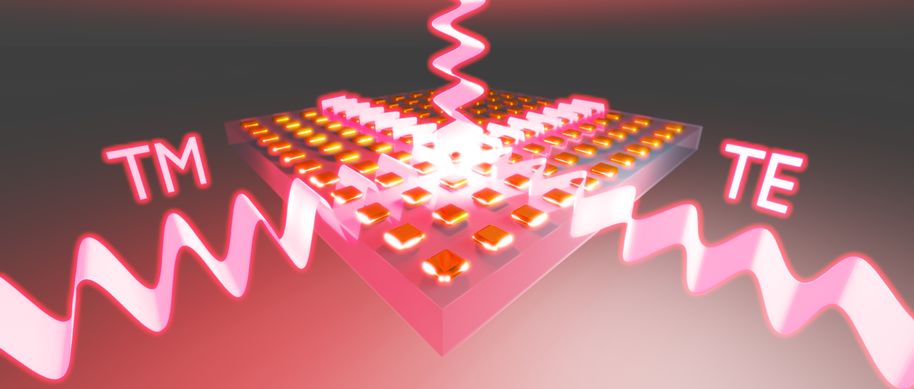Photonics HandbookTechnology News
Simulated Technique Cuts Losses in Optical Resonators
Optical resonators are used to control light in a range of photonic applications, from pocket-size laser pointers to quantum computers. When a resonator experiences optical loss, its ability to trap and concentrate photons deteriorates, reducing its ability to control the photons’ behavior.
Researchers at Aalto University devised a way to eliminate both the radiation and the absorption losses in optical resonators. The new loss-mitigation technique could considerably boost the performance of photonic applications and devices that depend on resonant enhancement of light-matter interaction.
In resonant optical systems, the average amount of time each photon spends trapped inside the resonator, before it either escapes or is absorbed, is quantified by the quality (Q) factor. The concept of bound states in the continuum (BICs) has made it possible to realize high-Q resonances in a variety of nonabsorbing optical systems, including photonic crystals, metasurfaces, and individual dielectric nanoresonators, by providing a strategy for eliminating radiation loss.
The Aalto team applied the BIC concept to optical resonators. The team created a nonradiating, nonabsorbing BIC mechanism by coupling a lossy mode of a resonant optical structure to two independent, lossless modes. Losses due to both radiation and absorption were simultaneously suppressed when the two lossless modes had equal resonance frequencies.

The illustration depicts the coupling of an array of gold nanoparticles and two guided modes of a planar waveguide to create a perfectly lossless resonant metasurface. Courtesy of Radoslaw Kolkowski/Aalto University.
The BIC mechanism can originate from modes of different types. The hybrid resonances can be perfectly lossless, even when the coupling of the modes is provided by lossy nanostructures.
There are no explicit symmetry requirements for the coupled modes as long as the coupling mechanism is preserved. This feature could make the BIC mechanism useful for providing ultrahigh-Q resonances in various systems containing absorbing structures.
The researchers used the BIC mechanism to design a simulated plasmonic metasurface with Q factors that were close to 107 in the visible spectral range.
Using numerical simulations, the researchers composed a periodic metasurface made of an array of loss-prone gold nanoparticles and a planar waveguide supporting two different types of guided modes. The researchers were able to simulate a hybrid resonance in which there was neither radiation nor absorption loss, thus demonstrating the possibility of simultaneous suppression of the radiation and absorption losses in a plasmonic metasurface.
The high Q factor achieved by the BIC mechanism (106 to 107 in the visible range) could be increased further, the researchers said, by optimizing the resonant structure — for example, by replacing gold with silver.
The findings suggest that even strongly absorbing plasmonic or semiconductor materials could be used to construct ultrahigh-Q resonant systems based on BICs. The BIC loss cancellation mechanism is universal, the researchers said, and has the potential to improve all kinds of resonators beyond the realm of optics.
“Think of any oscillators: pendulums, acoustic or seismic vibrations, quantum excitations,” researcher Andriy Shevchenko said. “This approach can be applied to any of them, which can lead to a variety of useful applications and creation of new devices.”
The simultaneous elimination of both radiation and absorption losses using optical BICs could improve the performance of plasmonic systems by enabling high-Q resonances with strong local field enhancement. High-index dielectrics, which are strongly absorbing in the visible spectral range, could be used to create high-Q, Mie-resonant photonic structures that could be useful in applications that rely on resonant enhancement of light-matter interaction, including spectroscopic devices, nonlinear optical modulators and frequency converters, and custom light emitters.
While the BIC mechanism for loss cancellation has been theoretically demonstrated, inefficiencies could occur in the real-world application of the technique. This could be due to fabrication imperfections or the finite size of absorbing resonant structures. Nevertheless, the quality improvement of photonic systems that is achievable with the BIC mechanism is significant, the researchers believe, and could lead to enhanced photonic devices with new functionalities.
“By mitigating both the radiation and absorption losses, we can theoretically trap photons in a closed system indefinitely, despite using an absorbing material to build the system,” researcher Radoslaw Kolkowski said. “Boosting the resonance quality factors allows us to greatly enhance the interaction of light with matter, which can be used in a multitude of applications, for example, in laser technology, spectroscopy, metrology, and nonlinear optics.”
The open access research paper includes a replication package with detailed instructions on how to carry out the simulations to reproduce the presented results.
The research was published in Nanophotonics (www.doi.org/10.1515/nanoph-2023-0281).
Published: September 2023